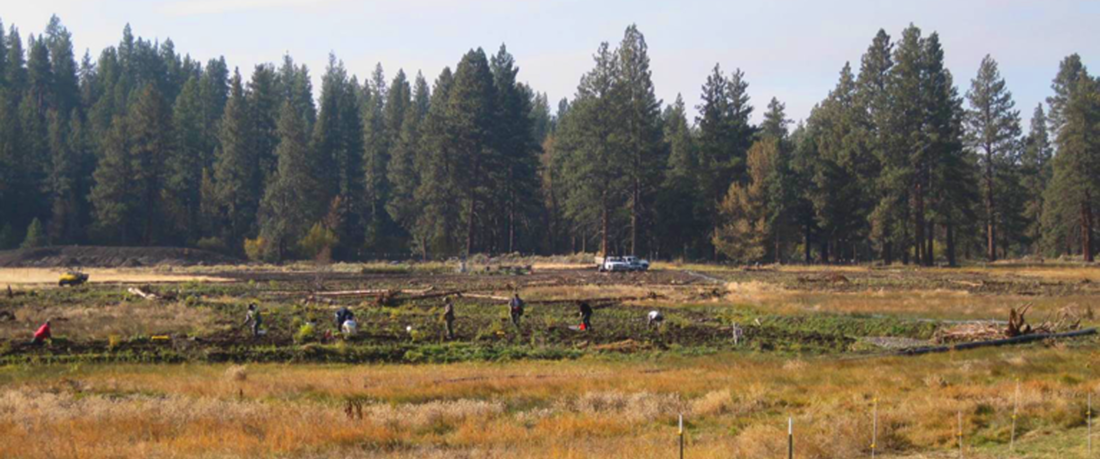Aequinox offers a range of habitat restoration services including planning, design, implementation, monitoring, and permitting. We help restore degraded habitat throughout the Western U.S., including stream, wetland, and upland habitat in Central and Eastern Oregon. We take a systems approach to our habitat restoration services by understanding ecosystem functions and processes throughout a watershed. We work collaboratively with landowners and a suite of “-ologists” and engineers to design and construct systems that set nature up to do the real work of regeneration and complexity-building over time.
We often collaborate with partners in the Deschutes Basin (Deschutes Land Trust, Upper Deschutes Watershed Council, Deschutes National Forest) to restore stream and riparian habitat for returning salmon and steelhead to the Metolius, Deschutes, and Crooked River watersheds. We work closely with others who do the channel design while we focus on the Plant Design, management of large riparian plantings, and vegetation monitoring to restore habitat for fish and other species that rely on diverse, structurally complex riparian habitat. We’re fortunate to work in areas that allow us to restore natural processes and use innovative methods that contribute to the science of stream restoration.
We also develop habitat restoration plans for wetland and upland ecosystems. We use standard practices in the field of ecological restoration that include research into historical and existing conditions, characterizing intact reference systems, and design that optimizes species richness and structural diversity while leveraging habitat connectivity. We also teach ecological restoration courses and conduct habitat surveys, including those for threatened & endangered species.
These papers describe some of the principles guiding our stream restoration work with Deschutes Basin partners:
Cluer, B. and CR Thorne. 2014. A stream evolution model integrating habitat and ecosystem benefits. River Research and Applications 30: 135-154.
Pollack MM, Beechis TJ, Wheaton JM, Jordan CE, Bouwes N, Weber N, and C Volk. 2014. Using Beaver Dams to restore incised stream ecosystems. BioScience 64: 279–290.
Pollock MM, Heim M, and D.Werner. 2003. Hydrologic and geomorphic effects of beaver dams and their influence on fishes. AFS Symposium 37: 213-233.
Learn more about our Habitat Restoration Projects.

